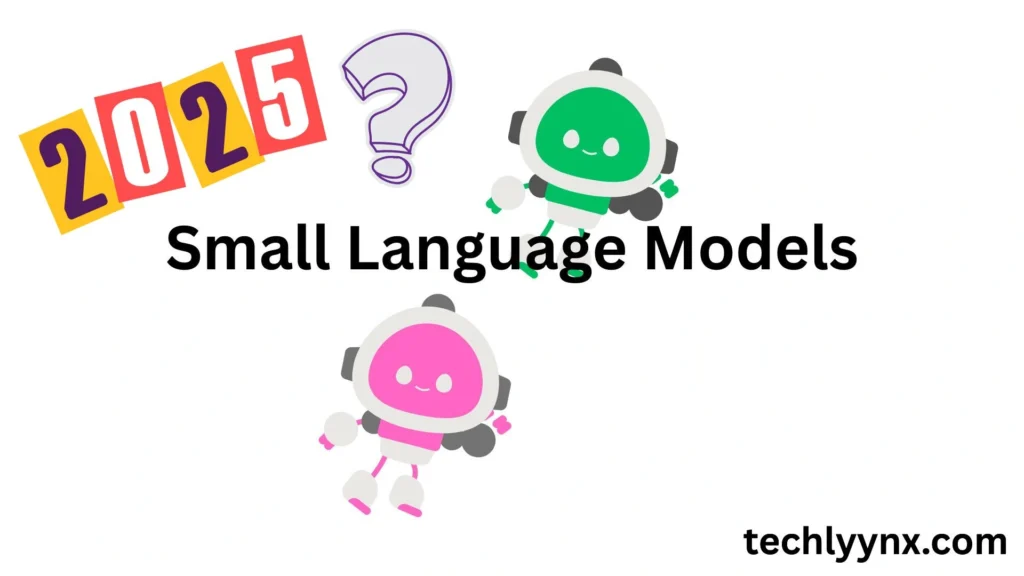Artificial intelligence (AI) has significantly changed how humans interact with technology. Large Language Models (LLMs) such as GPT-4, GPT-5, and other huge architectures frequently make headlines, but the tale does not stop there. While large AI models impress with their size and capabilities, small language model continue to play important roles in the changing AI ecosystem.
As AI advances, it is important considering if small language models are still helpful in 2025, or if they have fallen behind. The answer is more subtle than simply saying yes or no. This article investigates their merits, limits, and practical uses.
What Are Small Language Model?
Small language models are AI models that are trained on less datasets and have fewer parameters than big LLMs. Instead of billions of parameters, these models could include millions or even hundreds of millions.
They are lightweight, quick to run, and frequently optimized for specialized activities such as customer service, language correction, or search assistance. Small models, unlike their larger counterparts, do not attempt to manage everything, but rather focus on handling fewer things efficiently.
Why Big Isn’t Always Better
What are LLMs: A Comprehensive Guide
The AI sector frequently emphasizes “bigger is better.” Large Language Model provide human-like responses, long-form content, and can even solve hard reasoning problems. However, larger models come with high costs:
- High computational requirements: Running a large model necessitates expensive technology and a lot of energy.
- Latency Issues: Larger models may be slower in real-time applications.
- Limited Accessibility: Not all businesses can afford the infrastructure required to use them.
This is where little language models carve out a niche. They may not compete with giants in creative writing or complex reasoning, but they thrive in speed, cost-effectiveness, and accessibility.
Advantages of Small Language Model in 2025

Small models require less computing power, making them perfect for edge devices like smartphones, IoT gadgets, and offline assistants.
2. Lower Costs
They save companies money on training, deployment, and energy consumption. For startups or small organizations, this is a huge advantage.
3. Task Specialization
Unlike LLMs that try to be generalists, small models are excellent at niche tasks such as:
- Customer service chatbots
- Grammar and spelling correction
- Search query completion
- Voice command recognition
4. Data Privacy
Small language model can be deployed locally without sending data to cloud servers, reducing security risks for sensitive information.
Small Language Model Shine in 2025
Even though powerful LLMs dominate the headlines, tiny language models remain highly relevant in 2025 in domains such as:
Healthcare Devices: Medical wearables frequently use modest AI models to track patients in real time.
Education: Personalized tutors on tablets or school networks use lightweight models that do not require extensive infrastructure.
Business Tools: Internal company systems frequently favor smaller models to save money and ensure speed.
Developing Countries: Countries with poor internet connectivity and older gadgets can nevertheless benefit from AI using tiny models.
Challenges Facing Small Language Model

While beneficial, small models confront limitations.
- They have a limited understanding of difficult tasks as compared to larger AI systems.
- Less Creativity: They struggle to create high-quality, long-form prose or innovative content.
- Maintenance: Training must be updated to remain relevant, which can be resource-intensive over time.
Nonetheless, these issues do not diminish their usefulness; rather, they highlight the importance of properly positioning them in the AI ecosystem.
Innovations Driving SLMs Forward
The flood of new breakthroughs that make small language model more capable is one of the reasons they will stay relevant in 2025. Quantization, distillation, and transfer learning techniques enable developers to reduce larger models to smaller, faster versions while retaining high accuracy.
Furthermore, hardware advancements—such as AI chips in smartphones and edge devices—have improved the efficiency of running small models locally. These innovations indicate that SLMs are actively changing rather than simply surviving.
Real-World Examples in Action

To understand their value, consider how tiny language models are used today:
- Grammarly-style writing aides employ compact models to deliver grammatical and clarity comments immediately.
- Car voice assistants rely on small models to handle navigation commands and offline interactions.
- Retailers use them in chatbots to quickly address product questions without relying on cloud-based solutions.
- Healthcare monitoring devices use small models to make quick, private decisions (for example, recognizing irregular heartbeats).
These examples demonstrate that, while small models lack the grandeur of LLMs, they are firmly rooted in practical, daily technology.
The Future
Small language model are unlikely to disappear in the future. Instead, they’re evolving and becoming even more significant as businesses advocate for AI democratization, which means making AI available to everyone, not just those with advanced infrastructure.
We should expect to see:
- More hybrid systems that combine tiny and large models to maximize efficiency.
- Enhanced open-source initiatives offer community-driven tiny models.
- Wider use in privacy-sensitive applications where local processing is preferred.
Conclusion
So, are small language model still helpful by 2025? Absolutely. While huge AI models get all the attention, smaller models continue to play important roles in cost-effective, efficient, and privacy-conscious applications. They may not write masterpieces or solve complicated theories, but they ensure that AI remains useful and accessible for everyday tasks.
Finally, the future of artificial intelligence will not be limited to giants. It will also rely on the silent strength of small language models to power countless apps in the background—fast, cheap, and necessary.

